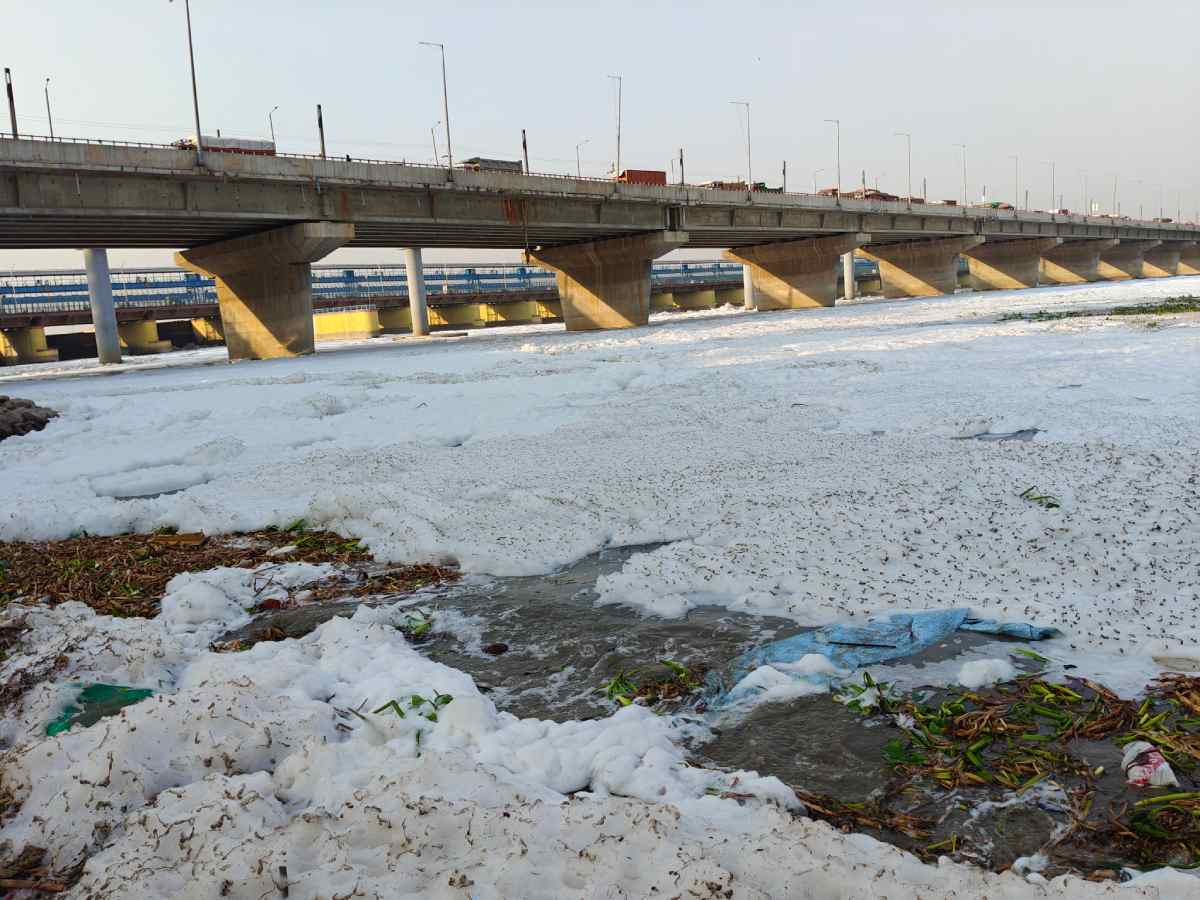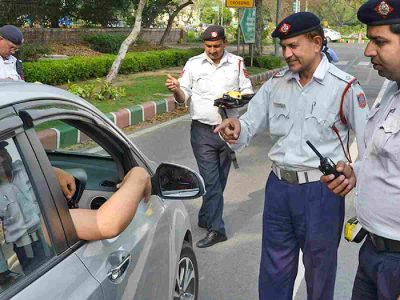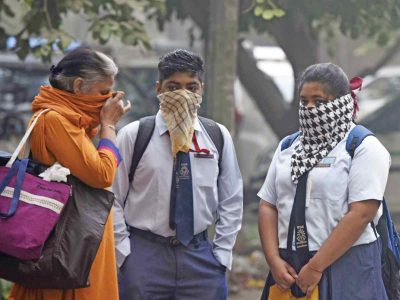In a move that has triggered sharp criticism from environmental experts, the Centre and the Delhi government are finalising a proposal to divert Ganga river water into the Yamuna as a stop-gap measure to clean the heavily polluted river stretch in the national capital. Experts have described the plan as “illogical,” “unsustainable,” and little more than a “desperate cover-up” for decades of failed efforts and squandered public funds.
According to official sources, the plan—currently in an advanced stage—involves redirecting nearly 380 million gallons per day (MGD) of water from the Upper Ganga Canal (UGC) through existing infrastructure to the Yamuna via the Eastern Yamuna Canal in Uttar Pradesh. This strategy, discussed in high-level meetings chaired by Prime Minister Narendra Modi and Union Home Minister Amit Shah, is being positioned as a temporary solution until Delhi upgrades its sewage treatment systems by 2026.
However, environmentalists argue that the proposal is deeply flawed and lacks long-term vision.
A Band-Aid for a severed artery
Bhim Singh Rawat, Associate Coordinator at the South Asia Network on Dams, Rivers & People (SANDRP), said the plan reflects a complete failure of political will.
“Diverting water from the Ganga to give the illusion of flow in the Yamuna is nothing but a shortcut—an attempt to mask the failure of schemes like the Yamuna Action Plan and Namami Gange, despite thousands of crores already spent,” Rawat said. “This ‘rob Peter to pay Paul’ model won’t revive either river—it will only replicate the crisis.”
He warned that the Ganga itself is under serious ecological stress, with declining water quality and increasing pollution. “Diverting more water will only worsen the Ganga’s health. Ironically, Delhi, Agra, and Greater Noida—cities that lie along the Yamuna—are already drawing drinking water from the Ganga. This plan is not only contradictory but also ecologically suicidal.”
Rawat instead called for genuine river restoration efforts, starting with the implementation of the 2019 National Institute of Hydrology (NIH) study that recommends releasing at least 23 cumecs of water from the Hathni Kund Barrage during the dry season. “Restoring natural flows is the only path to revival,” he asserted.
Also read: Delhi: Forced labour continues to imperil children
Theatrics over action
Echoing these concerns, environmentalist Pankaj Kumar described the plan as a political gimmick designed to mislead the public.
“It is extremely disheartening to see such superficial thinking dominate the agenda,” he said. “Instead of real solutions, we’re seeing stage-managed theatrics.”
Kumar mocked the idea of recreating a sangam in Delhi, calling it an insult to both ecological intelligence and religious sentiment. “The government seems keen on manufacturing a fake confluence of rivers in the capital so that people no longer have to travel to Prayagraj to witness the real one. Meanwhile, the Yamuna continues to flow like a toxic sewer.”
He also cast serious doubt on the government’s claim that Delhi would be able to clean the Yamuna by 2026. Kumar noted that even after all sewage treatment plants (STPs) and decentralised STPs (DSTPs) are upgraded, Delhi’s treatment capacity may touch 964.5 MGD—still short of the 1,000 MGD of wastewater it generates daily. With an additional 300 MGD flowing in from neighbouring states, the total sewage load exceeds 1,300 MGD.
“This makes the promise of a clean Yamuna by 2026 not just ambitious but absurd,” he said.
Kumar added that even if upgrades are completed as promised, there would still be a shortfall of nearly 350 MGD, meaning untreated sewage would continue to flow into the river unabated. “This plan conveniently ignores ground realities and instead relies on a false narrative to gain political mileage.”
Legal violations and unaddressed polluters
Another environmental activist, Varun Gulati, strongly criticised the Central government’s directive to the Uttar Pradesh government to release Ganga water into the Yamuna for two years. He described the move as an “eyewash” and a gross violation of environmental norms.
Citing the Environment Impact Assessment (EIA) Notification, 2006, Gulati said the measure is unlawful and will have no long-term impact. “As per the Central Pollution Control Board (CPCB), diluting untreated effluents with freshwater is a clear violation of environmental principles. It does not solve the problem—it only hides it,” he stated.
Gulati argued that unless the discharge of untreated sewage and industrial waste into the Yamuna is stopped, no amount of Ganga water can restore the river’s health. He also raised concerns about more than 1.5 lakh illegal industrial units operating in residential and redevelopment areas of Delhi, many of which lack Common Effluent Treatment Plants (CETPs).
“Instead of addressing these unregulated polluters, the government is merely upgrading STPs, which are ill-equipped to handle the effluents generated by industrial units,” he said.
Gulati cited high-pollution zones such as Roop Nagar and Arya Nagar in Loni, Ghaziabad, where authorities have allegedly remained silent about the damage caused by industries. He termed the Ganga diversion a wasteful use of national resources, noting that it involves massive infrastructure and financial investments without addressing the root causes of pollution.
“This approach blatantly violates the ‘Polluter Pays’ principle. Instead of making polluters accountable, the government is burdening taxpayers to conceal the crisis,” he said.
A politically loaded gamble
The Centre’s move is being viewed as politically sensitive, especially with Uttar Pradesh—whose cooperation is essential—headed into assembly elections in early 2027. While the state government has so far shown reluctance, negotiations are ongoing. The Centre has reportedly offered financial compensation and infrastructure support in return for Ganga water.
Sources revealed that the Director General of the National Mission for Clean Ganga is drafting a proposal to reassure Uttar Pradesh that the diversion won’t infringe on its riparian rights. The Centre has suggested that the diverted water would flow back into the state downstream via the Yamuna.
Yet experts argue that no amount of bureaucratic manoeuvring can hide the truth: the Yamuna’s crisis stems from years of neglect, unchecked pollution, and a lack of strong ecological policy.
Big plan, small impact
The proposal, according to government officials, hinges on utilising existing infrastructure to avoid construction delays. Since the Upper Ganga Canal does not cross Delhi or connect directly to the Yamuna, the water will be routed through the Eastern Yamuna Canal, which passes through western Uttar Pradesh. From there, it will be diverted into the Yamuna using minor engineering works.
Officials claim that since the water will eventually flow downstream back into Uttar Pradesh, the state won’t suffer any net water loss. The Centre is also considering additional funds for irrigation as a compensatory measure.
Yet environmentalists remain unconvinced. “If you’re taking water from an already struggling river like the Ganga to feed another dying river, you’re not solving the problem—you’re shifting it,” said Rawat.
Experts argue that this kind of water management fails to account for cumulative ecological costs and merely treats symptoms rather than causes. “You cannot revive rivers through diversions and optics. What’s needed is a systemic overhaul in wastewater management, ecological flow regulations, and solid enforcement,” Kumar emphasised.
Also read: Rs 473 crore of online fraud reported in Delhi so far in 2025
Poll promise becomes policy
The urgency behind the proposal is also seen as politically motivated. In the run-up to the recent Delhi Assembly elections, Prime Minister Narendra Modi had pledged to clean the Yamuna—a promise that resonated with voters. Upon winning, he began his victory speech with the chant “Yamuna Maiya ki Jai,” signalling the symbolic importance of the river to the party’s political narrative.
But beneath the slogans lies a river choking on decades of mismanagement. The current lean-season flow in the Yamuna is only 0.49 million cubic metres (MCM) per day—far below the required ecological flow of 0.86 MCM. Experts argue that inflating the river with borrowed water is no substitute for authentic revival.
A temporary fix for a permanent problem
The Centre views the Ganga diversion as a temporary measure to sustain the Yamuna’s flow until key infrastructure projects, such as new dams and upgraded STPs, are completed. Officials claim that once these dams are built, monsoon water can be stored and released during the dry season to maintain flow.
But with no clear timeline in place, experts worry that this so-called temporary fix could become a long-term dependency—one that further deteriorates the health of both rivers.
“Shortcuts will only lead us back to square one,” warned Rawat.
What do the town planner say
Pushkar Pawar, MCD based Town Planner, said, “Delhi does have limited infrastructure to receive water from the Ganga River, but not for the purpose of cleaning the Yamuna River. Currently, water from the Ganga is transported to Delhi through the Upper Ganga Canal, mainly to supplement the city’s drinking water supply. This water is lifted at Haridwar and brought to Delhi via a network of canals and pipelines. However, this infrastructure is primarily designed to meet domestic water needs and is not intended for transporting large volumes of water specifically for river rejuvenation.”
“Introducing Ganga water into the Yamuna can significantly improve the river’s water quality by increasing its overall flow. One of the main reasons the Yamuna remains heavily polluted, especially in Delhi, is due to its low natural flow and high pollutant load from untreated sewage and industrial waste. When fresh water from the Ganga is added, it helps to dilute the concentration of pollutants, including harmful chemicals, organic waste, and pathogens,” he said.
“A higher volume of flowing water also helps in the natural self-purification process of the river, where sediments settle, and pollutants are broken down biologically and chemically. Additionally, better flow increase dissolved oxygen levels and reduce the build-up of toxic sludge and minimize the spread of foul odours, improving the overall livability of surrounding areas. It can also help revive aquatic biodiversity by creating a more habitable environment for fish, turtles, and other riverine species that have declined due to pollution and low oxygen levels,” Pawar said.
“From a social and cultural perspective, a visibly cleaner Yamuna can enhance the quality of life for residents, encourage responsible tourism, and promote cultural activities along the ghats. It can also help restore the river’s image as a sacred and life-giving water body. Furthermore, increased water flow can reduce mosquito breeding in stagnant water, which may lower the risk of waterborne and vector-borne diseases in densely populated riverside areas,” Town Planner said.
“In urban environments like Delhi, rivers also contribute to microclimate regulation. A healthier, flowing river can play a role in lowering local temperatures and improving humidity levels, providing a more balanced and comfortable urban climate. Overall, bringing Ganga water to the Yamuna can offer multiple environmental, ecological, social, and health-related benefits, especially when combined with broader river management and pollution control efforts,” he said.
“Delhi generates a significant amount of sewage daily, and a portion of this wastewater enters the Yamuna either untreated or partially treated. The river within the city receives most of its pollution load from domestic and industrial discharges. Increasing the water flow by adding clean water from external sources can help in improving the physical condition of the river. However, to ensure that this effort is effective, it is essential to have fully functional sewage treatment plants across the city. The total treatment capacity must be sufficient to handle the entire volume of wastewater generated by Delhi. No untreated or inadequately treated wastewater should be allowed to enter the Yamuna; otherwise, any clean water introduced—whether from the Ganga or elsewhere—will quickly become polluted again,” he asserted.
“Alongside the use of clean water, various programs are being implemented to upgrade sewage treatment plants, manage solid and liquid waste, and monitor the quality of effluents entering the river. Measures are also being taken to ensure minimum environmental flow in the Yamuna by regulating upstream water use. These initiatives work together to improve the overall state of the river and support its ecological restoration,” Pawar concluded.





